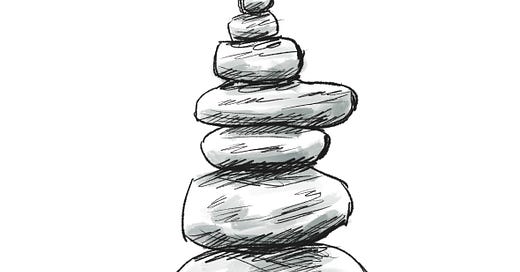Several years ago, I read a book by the author Jon Ronson, The Psychopath Test: A Journey Through the Madness Industry. I discuss this more in the companion post. Ronson is an interesting author who mixes investigative journalism and personal narration, so the reader feels they are discovering things in real time with the author. Whilst reading the book, I learned about another book which I never realised was so important. The Diagnostic and Statistical Manual of Mental Disorders (DSM-5-TR) or more commonly known as the DSM-5 appeared to be an influential work that not many people know about.
The DSM-5 is a book that a psychologist or psychiatrist will refer to when making any official diagnosis of a mental illness or condition. In simple terms, certain criteria are laid out in the manual that a person must satisfy to allow the psychiatrist to give a specific diagnosis. This book is produced by the American Psychiatric Association, which uses a large panel of experts to develop and revise the manual on a regular basis. The current revision, numbered 5, indicates there have been four previous manuals. Furthermore, the TR in the title refers to a text revision in 2022. There are other manuals, such as the International Classification of Diseases (ICD). However, the DSM-5 appears to have been captured in the public consciousness.
Revised additions update the manual with new diagnoses for mental health conditions. Over the years, the DSM has grown larger in content. New conditions that have been studied and a consensus has been built around will make up this additional content. After they are added, some slowly permeate into the public zeitgeist.
You may have been in a conversation with people and suddenly heard of a someone being diagnosed with a condition that you never had heard of before, and then within a short period, it appears that more and more people you know are talking about this condition. This process has been given rocket fuel with the onset of social media.
An example of this was some time ago in Australia. It appeared that numerous high-profile rugby league football stars were regularly been caught in compromising positions involving illicit drug use, drunk and disorderly behaviour, or inappropriate sexual behaviour. Often, it would include all three activities. The obligatory press conference would include a spokesperson and/or the star apologising and then explaining they had been diagnosed with bipolar disorder. The star would disappear, and it was understood they were receiving help. This is when I felt the idea of being bipolar had appeared to gain a common understanding or misunderstanding in the wider society where now you will see many famous and ordinary people claiming to have this diagnosis. I have met a person who was being treated for severe bipolar disorder. Seeing their personality change on a weekly basis and how it was affecting their life made me realise in no uncertain terms what bipolar was. I often thought about this person watching the television or listening to conversations about people having bipolar and thinking you people really do not have a clue what you are talking about.
Anyone claiming to have a diagnosis for a particular condition must have had it done so by either a clinical psychologist or psychiatrist. For certain, there can be pressure exerted on mental health professionals from interested groups for a diagnosis or sometimes they are just incorrect. This can increase public perception that more people have a certain condition. In addition, if you scratch under the surface, you will see there is a lot of self-diagnosis of mental health that occurs in modern society. Both these trends are concerning and have the potential to undermine people's understanding of genuine mental health conditions. Interestingly none of this could or would have happened if we did not decide to collate how we recognise and diagnose mental health conditions.
To put all this into context for this Substack, in 2022 the condition Prolonged Grief Disorder was added to the DSM-5-TR. In the companion post to this one, I will discuss what this may potentially mean. Ultimately having an official diagnosis is one thing but it does beg the question what that means to the individual and the rest of society.
Additional Information





